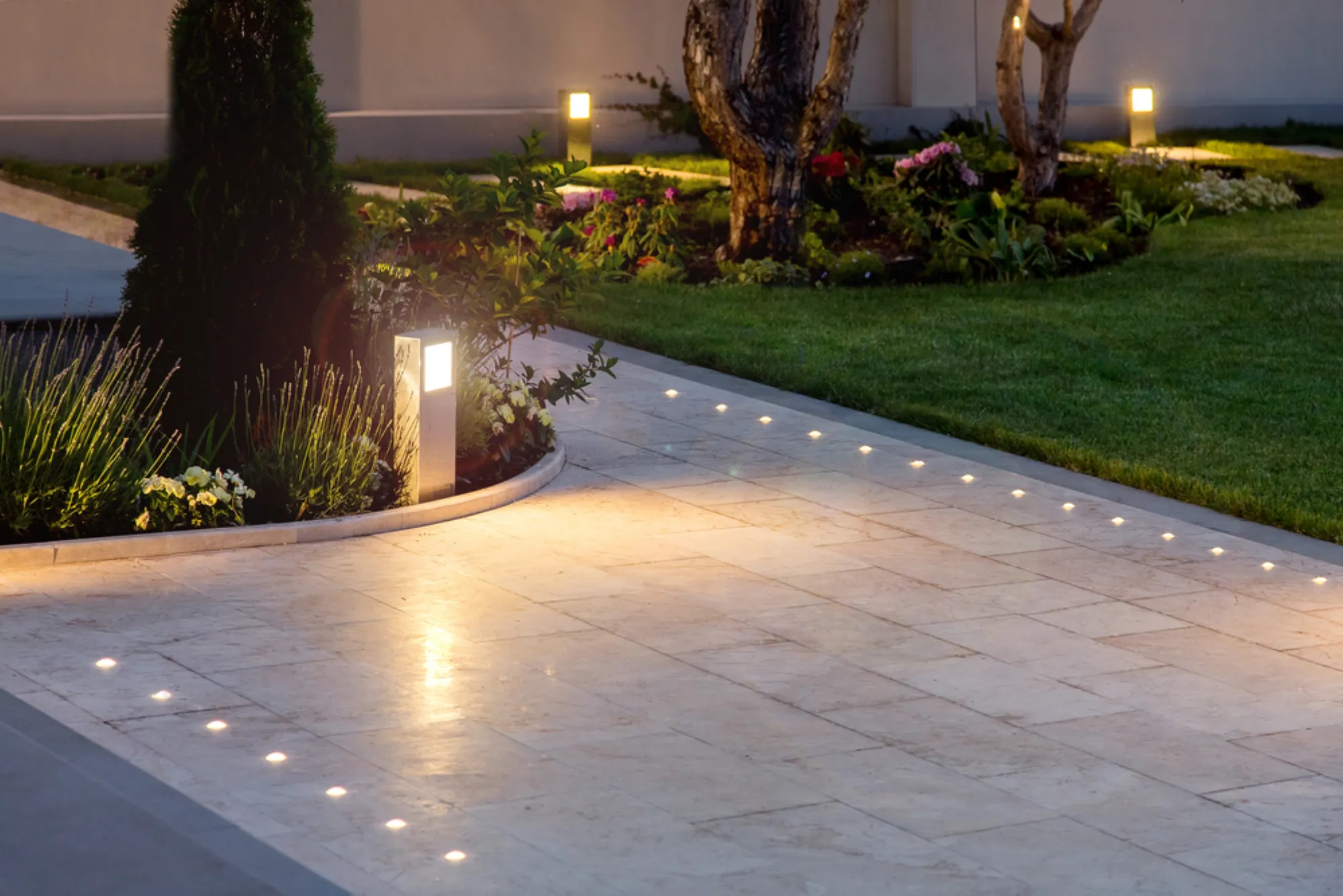In the realm of architecture and landscape design, outdoor lighting plays a pivotal role in creating captivating and inviting environments. It is not just about providing visibility after dark; it is an artful process that accentuates the beauty of buildings, gardens, and outdoor spaces. Among the diverse types of outdoor lighting design, facade lighting stands out as a fascinating technique that transforms the exteriors of structures into mesmerizing works of art. In this article, we will delve into the four types of outdoor lighting design, with a particular focus on the captivating world of facade lighting.
Ambient Lighting
Ambient lighting serves as the foundation of any outdoor lighting design. It is the soft, gentle glow that fills a space, providing general illumination without harsh shadows. In outdoor settings, ambient lighting can be achieved through various fixtures such as post lights, lanterns, and overhead string lights. This type of lighting creates a warm and inviting atmosphere, making it ideal for entertaining guests or enjoying quiet evenings outdoors.
To incorporate ambient lighting effectively, consider the architectural features of the space, the placement of light fixtures, and the choice of bulbs. Utilizing energy-efficient LED bulbs is not only eco-friendly but also ensures longevity and reduced energy consumption.
Task Lighting
Task lighting is designed to provide focused illumination for specific activities or functional purposes. This type of outdoor lighting is especially useful for enhancing safety and functionality in areas such as pathways, stairs, and entryways. Wall-mounted fixtures, bollard lights, and step lights are commonly used for task lighting.
By strategically placing task lighting fixtures, you can create well-lit pathways and highlight essential features, ensuring the safety and convenience of outdoor spaces even during the darkest nights. The illumination must be balanced to avoid glare while offering adequate brightness for the intended tasks.
Accent Lighting
Accent lighting is the art of adding drama and visual interest to the outdoors. It is the magic that breathes life into architectural elements, sculptures, trees, and other focal points within the landscape. This type of lighting draws attention to specific areas, creating a captivating atmosphere and giving a unique personality to the outdoor space.
Facade lighting, a subcategory of accent lighting, takes center stage in accentuating the architectural splendor of buildings. By employing techniques like uplighting, downlighting, and grazing, facade lighting can showcase the fine details and textures of structures, turning them into stunning landmarks even after sunset. LED spotlights and floodlights are popular choices for accent lighting due to their precise control and ability to create dramatic effects.
Security Lighting
While aesthetics and ambiance are essential, outdoor lighting is also an indispensable aspect of security and safety. Security lighting is designed to deter potential intruders, enhance visibility, and make outdoor spaces more secure at night. It typically involves floodlights, motion-sensor lights, and wall-mounted fixtures.
When designing security lighting, it is crucial to strike a balance between functionality and aesthetics. Excessive brightness can cause light pollution and discomfort to neighbors, while inadequate lighting may fail to provide the intended security benefits. Moreover, integrating motion sensors and smart lighting controls can optimize security while conserving energy.
Facade Lighting
Facade lighting, as a subset of accent lighting, warrants special attention due to its unique ability to transform the appearance of buildings and elevate their architectural appeal. Whether it’s an iconic skyscraper, a historic monument, or a contemporary structure, facade lighting allows architects and designers to paint with light, showcasing the beauty and character of the building’s facade.
Architectural facades can be highlighted using different techniques:
Uplighting
This involves placing fixtures at the base of a building and directing the light upwards to illuminate its facade. Uplighting creates a dramatic effect, emphasizing the height and grandeur of the structure.
Downlighting
In contrast to uplighting, downlighting fixtures are placed above the facade to cast light downward. This technique creates a softer illumination that enhances surface textures and architectural details.
Grazing
Grazing involves placing light fixtures at a shallow angle close to the surface of the facade, accentuating its textures and creating depth.
Outdoor lighting design is a harmonious fusion of functionality, aesthetics, and innovation. The four types of outdoor lighting, namely ambient, task, accent, and security lighting, work in harmony to create inviting and visually captivating outdoor spaces. Facade lighting, a captivating aspect of accent lighting, plays a key role in illuminating architectural wonders and transforming buildings into masterpieces of light and shadow.
As architects, designers, and homeowners continue to explore the artistic potential of outdoor lighting, they will unlock new dimensions of creativity, making the world outside our homes a magical and enchanting place, even under the cover of darkness. With a keen focus on facade lighting, we can embrace the transformative power of light, redefining the boundaries of architectural design and expanding the canvas upon which we showcase our built environment.





